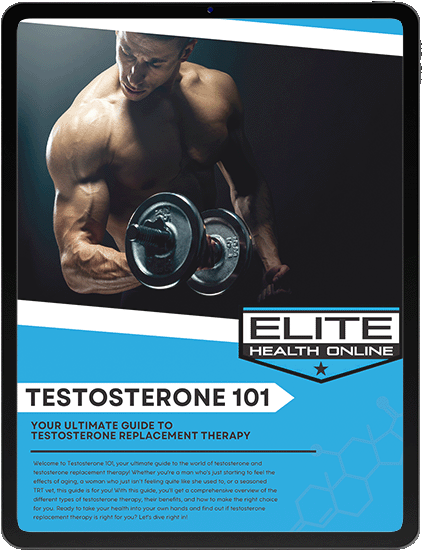 Testosterone, a hormone known to many as the driving force behind male physical characteristics and behavior, plays a significant role in both men’s and women’s bodies. Its role in men is more obvious, dictating the development of male traits during puberty and maintaining muscle and bone mass throughout adulthood. However, women’s bodies also produce testosterone, albeit in smaller quantities, where it performs vital functions such as bone strength regulation and libido maintenance.
Testosterone, a hormone known to many as the driving force behind male physical characteristics and behavior, plays a significant role in both men’s and women’s bodies. Its role in men is more obvious, dictating the development of male traits during puberty and maintaining muscle and bone mass throughout adulthood. However, women’s bodies also produce testosterone, albeit in smaller quantities, where it performs vital functions such as bone strength regulation and libido maintenance.
A thorough understanding of these levels in each gender and the potential need for testosterone therapy can provide crucial insights into hormone health, and it’s a topic that merits a thorough exploration.
Understanding How Testosterone Levels Differ in Each Gender
Testosterone is a hormone that plays a significant role in the male body, mainly produced in the testes. The American Urological Association reports that an adult male typically possesses a level ranging between 300 to 1,000 nanograms per deciliter (ng/dL). These substantial levels of testosterone underline its central role in shaping and sustaining the primary and secondary sexual characteristics in men.
In addition to its role in sexual development and function, testosterone in men is essential for numerous other physiological processes. It plays a crucial part in the maintenance of muscle and bone mass, ensuring robust physical health throughout adulthood. It also influences mood and cognitive function, highlighting its pervasive role in men’s health.
Although testosterone is often associated primarily with men, it is also produced in women’s bodies, specifically in the ovaries and adrenal glands. Women usually have significantly lower testosterone levels than men, reflecting the differing roles of this hormone in the two sexes.
Even though the levels of testosterone are lower in women, the hormone remains a critical part of their physiological functions. It aids in maintaining bone health, controlling mood, and preserving libido. Furthermore, in the context of the female reproductive system, testosterone plays a role in ovarian function, highlighting its multifaceted functions within the female body.
Exploring the Differences in Testosterone Therapy Between Men and Women
Men have used testosterone replacement therapy (TRT) for decades to treat low testosterone levels. 
For men, the benefits of TRT are well-known:
- Increased energy and libido,
- Improved muscle mass and strength,
- Better mood,
- Mental clarity.
However, TRT also has potential side effects for men like acne, or oily hair.
For women, TRT is a newer treatment, and the effects are not as well studied. Some research shows women may experience:
- Increased lean muscle mass,
- Improved bone density,
- Reduced menopausal symptoms,
- Better mental focus with TRT.
That said, there are risks to be aware of, including acne, and potential deepening of the voice.
When it comes to delivery methods, women have fewer options than men. Gels and creams are the most common for women, while men often use injections, pills, and pellets. Dosages for women are usually about 10 times lower than for men, around 0.25 to 1 milligram per day versus 2 to 10 milligrams per day for men.
If you’re a woman considering TRT, talk to your doctor about the pros and cons and whether it’s right for your situation. Get your hormone levels checked, discuss treatment options, and start with the lowest effective dose. Be aware that effects can take several months to become fully apparent. While TRT may provide life-changing benefits, patience, and monitoring are required to achieve the best results and avoid potential side effects. Overall, TRT can be safe and effective for both men and women under the proper guidance and care.
Specific Conditions or Considerations for Testosterone Therapy in Women
There are still many ongoing studies about the use of testosterone replacement therapy in women. For this reason, many physicians proceed with caution when considering this therapy for their female patients. If you’re a woman considering testosterone therapy, there are a few key things to keep in mind.
Dosage
 As mentioned women require much lower doses of testosterone than men to achieve therapeutic effects and avoid side effects. Your doctor will check your blood testosterone levels regularly and adjust the dosage based on your individual needs and response.
As mentioned women require much lower doses of testosterone than men to achieve therapeutic effects and avoid side effects. Your doctor will check your blood testosterone levels regularly and adjust the dosage based on your individual needs and response.
Application
Testosterone therapy comes in several forms for women, including pills, patches, gels, and injections. Transdermal patches and gels are often better tolerated. Injections of testosterone can be effective but may cause fluctuations in mood or libido between doses. Your doctor can help determine which application method is right for you based on your preferences, needs, and health conditions.
Conditions Treated
In women, testosterone therapy is primarily used to treat low libido and decreased sexual satisfaction. It may also be used to treat other symptoms like low energy, difficulty building muscle mass, or bone density loss. For some women, additional treatments like estrogen therapy or counseling may be needed in combination to effectively address symptoms.
Monitoring
If you start testosterone therapy, you’ll need to be closely monitored by your doctor. Blood tests to check testosterone and estrogen levels, as well as assessments for symptoms and side effects, are typically needed every 3-6 months when you first start therapy or whenever the dosage is changed. Long-term monitoring is also needed to make sure therapy remains safe and effective.
Conclusion
While testosterone is often connected with men, it plays a vital role in women’s health as well. The differences in levels between genders and their unique physiological impacts highlight the importance of a nuanced approach to testosterone therapy.
For men, testosterone therapy has been a widely accepted treatment for andropause and its accompanying symptoms. However, for women, it is a more complex matter. While showing potential benefits in treating sexual dysfunction and menopause symptoms, it carries with it side effects and potential risks. As such, testosterone therapy in women requires careful consideration and should be guided by a comprehensive discussion with a healthcare provider.
As we deepen our understanding of testosterone’s role in both men’s and women’s bodies, we inch closer to creating more effective and safer therapeutic interventions. The journey to unlocking the complexities of this crucial hormone continues, promising advancements in our approach to hormonal health for everyone.
For more information, contact us !!


